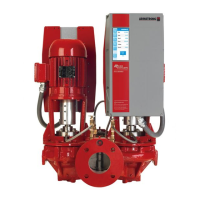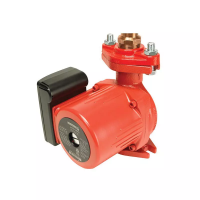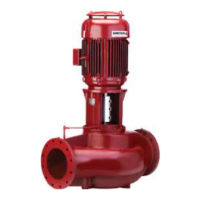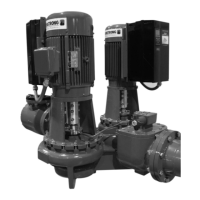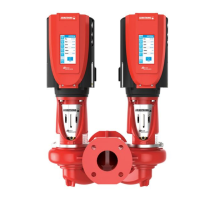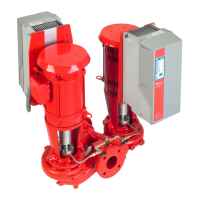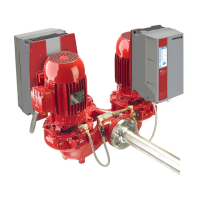Do you have a question about the Armstrong 4380 and is the answer not in the manual?
Safety measures, handling, storage, and unpacking procedures for the unit.
Guidelines for location, installation methods, pipe mounting, and support of vertical in-line pumps.
Specific installation arrangements including piping, floor supports, seismic considerations, and system integration.
Safety warnings for electrical work, grounding, motor protection, and derating.
Detailed electrical data: supply voltage, frequency, output ratings, and input/output types.
Power wiring, tools, cover disassembly, terminal wiring, and I/O connections for electrical setup.
Pump controller wiring, RS485, Ethernet, CAN bus, and networking options for system integration.
Modbus address mapping for pump control and status monitoring via IP or RTU.
BACnet object mapping for pump control and status monitoring via IP or MS/TP.
Comprehensive checklist to verify before putting the pump into operation.
Step-by-step instructions for safely starting the pump, including priming and valve operation.
Navigation and functions of the touch screen: login, about, settings, and modes.
Settings for pump control modes, including parallel, single, and remote operations.
System alarms and warnings, including descriptions and troubleshooting steps.
Accessing and using the pump's web interface for configuration and monitoring.
Explains various control strategies: Constant Flow, Constant Pressure, Linear, Quadratic, and flow protection.
General maintenance guidelines including keeping the unit clean and avoiding overheating.
Information on lubrication requirements for the pump and motor.
Detailed instructions for replacing mechanical seals on split-coupled and close-coupled units.
Comprehensive steps for disassembling, servicing, and reassembling the pump unit for repairs.
Importance of system cleaning before pump operation to prevent damage and ensure performance.
Lists alarm categories, descriptions, and troubleshooting for VFD and motor issues.
Lists warning categories, descriptions, and troubleshooting for VFD and motor issues.
Fuse and cabling recommendations for upstream protection based on drive ratings.
Safety measures, handling, storage, and unpacking procedures for the unit.
Guidelines for location, installation methods, pipe mounting, and support of vertical in-line pumps.
Specific installation arrangements including piping, floor supports, seismic considerations, and system integration.
Safety warnings for electrical work, grounding, motor protection, and derating.
Detailed electrical data: supply voltage, frequency, output ratings, and input/output types.
Power wiring, tools, cover disassembly, terminal wiring, and I/O connections for electrical setup.
Pump controller wiring, RS485, Ethernet, CAN bus, and networking options for system integration.
Modbus address mapping for pump control and status monitoring via IP or RTU.
BACnet object mapping for pump control and status monitoring via IP or MS/TP.
Comprehensive checklist to verify before putting the pump into operation.
Step-by-step instructions for safely starting the pump, including priming and valve operation.
Navigation and functions of the touch screen: login, about, settings, and modes.
Settings for pump control modes, including parallel, single, and remote operations.
System alarms and warnings, including descriptions and troubleshooting steps.
Accessing and using the pump's web interface for configuration and monitoring.
Explains various control strategies: Constant Flow, Constant Pressure, Linear, Quadratic, and flow protection.
General maintenance guidelines including keeping the unit clean and avoiding overheating.
Information on lubrication requirements for the pump and motor.
Detailed instructions for replacing mechanical seals on split-coupled and close-coupled units.
Comprehensive steps for disassembling, servicing, and reassembling the pump unit for repairs.
Importance of system cleaning before pump operation to prevent damage and ensure performance.
Lists alarm categories, descriptions, and troubleshooting for VFD and motor issues.
Lists warning categories, descriptions, and troubleshooting for VFD and motor issues.
Fuse and cabling recommendations for upstream protection based on drive ratings.
| Series | 4300 |
|---|---|
| Model | 4380 |
| Category | Water Pump |
| Voltage | 230V |
| Material | Cast Iron |
